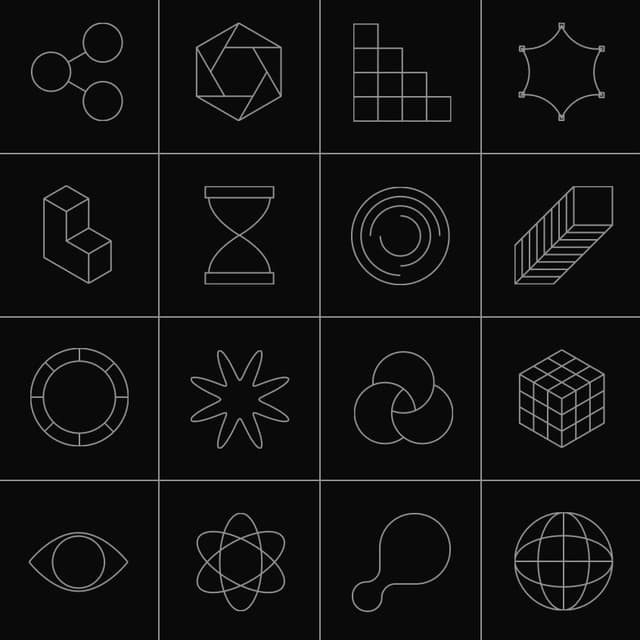The information here will be updated as necessary. Please check back regularly for the most current details. This guide contains all essential information, including key dates, submission rules, prize structures, technical tracks, and the complete judging criteria.
Last update: 3/11/25
Outline of this guide
- Key information and useful links: A high-level summary of the most important dates, deadlines, and resources.
- Official rules and submission guidelines: All teams and participants must adhere to these guidelines to be eligible for prizes.
- Hackathon tracks: Descriptions, technical prompts, and example ideas for each of the four available tracks:
- Prizes: A detailed breakdown of what teams are competing for, including cash prizes and the 8-week Build Club program.
- Judging Rubric: A detailed description of project scoring
- Forthcoming: Check back on this link for further details coming soon.
1. Key information and useful links
This section provides a high-level summary of the essential dates, rules, and resources.
Key dates and logistics
- Hackathon: November 17–19, 2025
- Location: London, UK. (Remote participation is allowed, but at least one team member must be present at the venue to pitch in person.)
- Initial code submission: November 18. Teams must submit their open-source GitHub repositories for a preliminary review by the judges.
- Final submission deadline: November 19.
- Judging and winners announced: November 19.
Core rules summary
- Team size: 5 members maximum.
- Accommodation: Hacking is encouraged to continue at your hotel, as the venue will not be open for overnight work.
- Code submission: You must submit your open source GitHub repository by November 18. You can continue to commit code until the final deadline on November 19, but the initial submission is mandatory.
- Net new projects: All projects must be new. Submissions cannot include work from prior hackathons or any code that participants are already being paid or contracted to develop.
Useful links and resources
- Main developer hub: The central starting point for all Midnight developer resources.
- Technical documentation: The official documentation for the Midnight network and smart contract language.
- Technical support: The best place to ask technical questions is on the Midnight developer forum
- Hack-specific discussion: Find for hackathon-specific channels #summit-hacker on Discord.
- Past hackathon projects: Explore blogs and showcases from previous hackathons to understand what makes a winning project.
- Hack-ready quests: Complete Zealy quests to prepare for the hackathon. Start with the Onboarding Module and then progress to the Build Module.
2. Official rules and submission guidelines
Participation in the hackathon is subject to the following rules. All teams and participants must adhere to these guidelines to be eligible for prizes.
Team formation and participation
- Team size: Teams must consist of 1 to 5 members.
- Location and remote work: Remote participation is permitted. However, at least one team member must be physically present at the event in London to coordinate and present the project and pitches must be made in person.
- Venue access: The hackathon venue will not remain open for overnight work. Participants may continue to develop their projects at their hotels or other off-site locations.
Project and code eligibility
- Original work: All projects must be original work developed for this hackathon.
- Prohibited submissions: Participants, including partners, are prohibited from submitting projects or code that they are already under contract or being paid to develop.
Submissions
- Tracks: You can only submit one project to one track (project cannot be submitted to multiple tracks)
- Your team is only eligible to win one track
- Multiple submissions: You can submit multiple projects (your team can create multiple projects)
Pitching process
- Initial code submission: All teams must submit their open source GitHub repository by November 18. This initial submission is mandatory for judges to begin their review.
- Final submission: Teams may continue to commit code to their repository until the final deadline on November 19.
- Pitching selection: The judging process includes a selection round. Only the top 4 projects from each of the 4 tracks (16 teams total) will be selected to present in the final pitching session.
3. Hackathon Tracks
The hackathon is organized into four distinct tracks. Each track challenges participants to use Midnight's programmable privacy to solve specific, high-impact problems.
1. AI track: Privacy-preserving intelligence
AI systems are dependent on the quality of their training data. In most cases, this data is sensitive, proprietary, or personal. This track challenges developers to build applications that enable inference and decision-making without exposing raw data.
Using Midnight’s programmable privacy, builders can create agents and analytics tools that maintain confidentiality while proving correctness. This enables use cases such as verifiable model outputs without leaking training data, or marketplaces where contributors can be rewarded for sharing insights, not identities.
Example DApp ideas
- Private AI audit: A model registry where developers can prove a model meets fairness or safety thresholds via ZK attestations—cryptographic proofs of a statement's truth without revealing the underlying data.
- Confidential inference API: A service that accepts encrypted inputs, runs machine learning inference privately, and returns verifiable results.
- AI reputation layer: Issue selective-disclosure credentials for AI agents that prove provenance or certification without revealing the owners.
2. Healthcare track: Confidential care coordination
Healthcare data is among the most regulated in the world. This regulation often conflicts with the need for interoperability and collaboration to improve patient outcomes.
This track asks builders to create solutions for privacy-preserving patient data exchange, ZK-verified compliance, and policy-based access. Midnight enables providers, insurers, and researchers to coordinate through smart contracts that enforce specific access rules (who can see what, and when) without placing raw patient records on-chain.
Example DApp ideas
- Consent ledger: Patients issue ZK proofs of consent to share specific records for limited durations or research scopes.
- Clinical trial privacy vault: Allow trial participants to submit data privately while still proving eligibility or participation.
- Insurance claim resolver: Automate claim adjudication where sensitive details (such as diagnosis or identity) remain encrypted but compliance rules are verifiably enforced.
3. Governance and identity track: Trust without exposure
Governance on public blockchains often requires exposing a user's entire voting history and holdings. Midnight provides an alternative model: verifiable participation in governance and identity systems that remain private.
This track focuses on using selective disclosure credentials and ZK voting to build new systems for civic, corporate, or DAO decision-making. The goal is a system that is transparent in its final outcome but private regarding individual actions.
Example DApp ideas
- Private DAO voting: A ZK ballot system that proves eligibility and vote inclusion without revealing voter identities.
- Reputation passport: A credential that aggregates on-chain activity into a ZK-verifiable trust score, shareable without exposing the underlying actions.
- Civic registry: A system for local or professional associations to issue verifiable membership proofs without leaking personal data.
4. Finance track: Compliant privacy for the real economy
Financial innovation requires balancing transparency with confidentiality. Midnight allows builders to design compliant DeFi and fintech primitives that meet regulatory standards while protecting users’ sensitive information.
This track is for applications that demonstrate ZK-KYC—a method of verifying customer identity without exposing personal data, private settlement, and policy-gated disclosure. These tools can connect institutional trust with individual privacy.
Example DApp ideas
- Private payment rail: A wallet-to-wallet transfer system with auditable compliance proofs (such as sanctions screening) but no public balance visibility.
- ZK-KYC lending pool: Borrowers prove creditworthiness or KYC compliance via attestations without exposing documents or personal identifying information.
- Escrow-with-disclosure: A conditional escrow where counterparties can trigger selective transparency in specific scenarios, such as a dispute or audit.
4. Prizes and the Build Club
Winning projects will receive cash prizes and an invitation to join the first cohort of the Midnight Build Club.
A total of five teams will be selected for prizes and entry into the Build Club:
- Top Overall Project (1 winner): $15,000
- Track Winners (3 winners): $2,500
- Runner-up (1 winner): $2,500
- This prize is awarded to the runner-up in the same track as the Top Overall Project.
- Hacker's Choice Award (1 winner):
- Voted on by all teams.
- This award winner will earn a place in the Build Club.
All five winning teams will earn a place in the Build Club, an 8-week program designed to help teams move an idea from prototype to production.
What is the Build Club?
The Build Club is an 8-week, part-time educational program for high-potential, idea-stage projects. Participants will learn from senior experts in software development, business development, and marketing strategy.
Build Club participants will receive:
- Weekly guidance sessions covering business strategy, technical reviews, pitch preparation, marketing, and roadmap planning.
- A suite of tools and resources valued at $100,000.
- Support for validating and refining the project's concept to develop a robust foundation.
At the end of the program, participants will have the opportunity to pitch to Midnight's network of investors for funding and acceptance into the Midnight Accelerator Program.
5. Judging Rubric Summary
The judging rubric is designed to identify well-rounded teams capable of turning their projects into viable DApps. Each project will be scored by expert judges across the following domains:
Product & Vision (20%)
Did the entrant clearly define a real problem and articulate a compelling vision? Did the project demonstrate strong planning, meaningful use of Midnight’s core capabilities (privacy, ZK, selective disclosure, data protection), and clear communication of purpose and value?
Engineering & Implementation (20%)
Did the entrant deliver a technically sound, reliable backend or smart contract system? Did they apply thoughtful architecture, maintainability, and reproducibility while effectively leveraging Midnight technology?
User Experience & Design (15%)
How intuitive and cohesive is the interface? Does it provide a seamless end-to-end experience, clear feedback, and professional visual presentation?
Quality Assurance & Reliability (15%)
To what extent has the entrant tested and stabilized their project? Does the product run reliably under demo conditions, show evidence of debugging and version control discipline, and achieve a polished level of readiness?
Communication & Advocacy (15%)
How well did the entrant communicate their project’s purpose and impact? Did they present confidently, use effective visuals or documentation, and engage with the broader community to share and educate others about Midnight?
Business Development & Viability (15%)
Does the entrant demonstrate understanding of their target audience, adoption path, and sustainability? Does the project show partnership potential, scalability, and alignment with Midnight’s long-term ecosystem goals?

